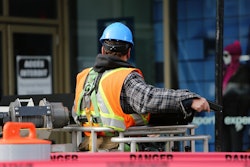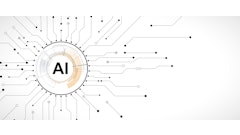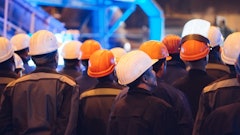
We have a generational conflict going on in maintenance, repair and operations (MRO) and sustainment operations. Veteran personnel, many of whom are nearing retirement age, have learned invaluable, hands-on skills such as inspection, repair, restoration, assembly, reinstallation and calibration. They know their tools inside out and are the lifeblood of the shop floor.
The new crop of arrivals has an entirely different orientation. They grew up in a digital world. They expect always-on connectivity, data at their fingerprints and digitized maintenance processes. They demand streamlining of processes. The idea that one machine won’t talk to another is foreign to them.
Embrace the Attributes of Both Generations
This collision presents a great many challenges in hiring, managing and retaining a multi-generational workforce. However, it also offers opportunities for those MRO facilities that can adapt successfully to these shifting demographics, skill sets and attitudes.
Part of the problem may be a tendency to deal in extremes. One extreme is to cling rigidly to old ways and resist change. The other side of the pendulum is to throw out everything and rush headlong to adopt the newest and brightest technologies. Both approaches are unlikely to work out well for those adopting them.
Instead of favoring one generation over another, the old over the new or the new over the old, the winning strategy is to embrace both sides. The knowledge of veteran workers must be prized. And it must be harnessed in combination with the valuable skill sets of younger generations.
Some are even finding that innovation blossoms when the combined talents of a mixed workforce are effectively integrated. Teams become more dynamic when they are composed of men and women from different age groups and educational backgrounds. Each facet of such a workforce brings with it unique perspectives and experiences. This can lead to innovation, sensible introduction of the right technologies and reduced downtime.
Such a mix of age groups also helps ensure cross-pollination of skills and technologies. The young set will sway the organization toward more user-friendly tooling and greater connectivity. The veterans will find themselves better grooved in on new tools and working with a fresh set of workers into which they can instill their hard-won technical skills and values.
Some organizations have used this personnel model to offer short apprentice programs to new employees. High school grads and college hires arrive with a modern technological viewpoint—and they learn vital hands-on skills from seasoned veterans.
Retain and Prepare for the Future
This has everything to do with achieving greater efficiency and preparing for the digital transformation. The last thing you want is for a new wave of enthusiastic employees to be frustrated by a general lack of data on-demand—or for the older crew to throw their arms in the air at the lack of hands-on skill capabilities of the young guns and decide to take early retirement.
After all, a joint report by Deloitte and the Manufacturing Institute estimates that 2.7 million jobs will be lost over the next few years due to attrition and retirements. Another 700,000 manufacturing and MRO jobs are likely to be created due to business growth. Another report stated that 2.3 million well-paying U.S. manufacturing and MRO jobs go unfilled each year. Whatever the actual number, there is no doubt that skilled workers of whatever age are in short supply.













![Pros To Know 2026 [color]](https://img.sdcexec.com/mindful/acbm/workspaces/default/uploads/2025/08/prostoknow-2026-color.mduFvhpgMk.png?ar=16%3A9&auto=format%2Ccompress&bg=fff&fill-color=fff&fit=fill&h=135&q=70&w=240)





